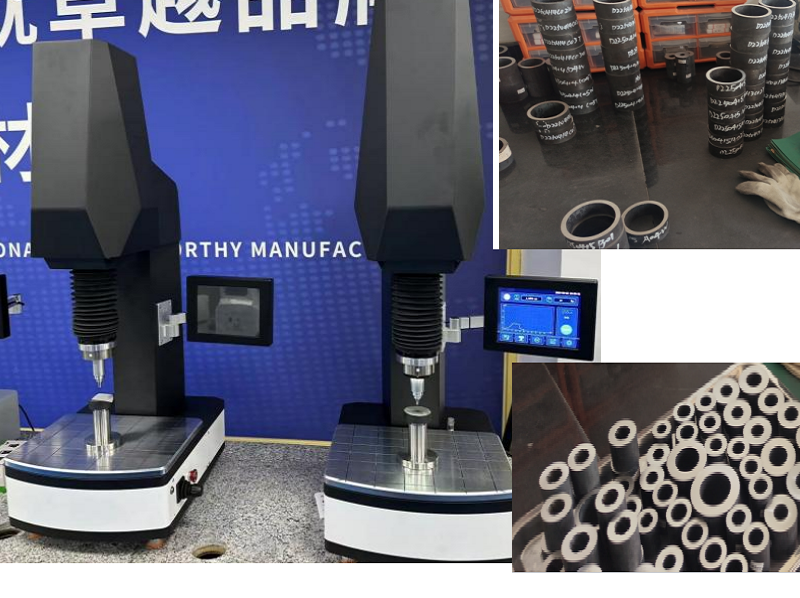In modern manufacturing, the hardness of parts is a key indicator to measure their quality and performance, which is crucial for many industries such as automobiles, aerospace, and mechanical processing. When faced with large-scale hardness testing of parts, the traditional multi-device, multi-manual operation mode is not only inefficient, but also prone to human errors, making it difficult to meet the growing demand for production testing. With the development of industrial automation and intelligent technology, the emergence of new hardness testers has provided an effective way to solve these problems. Intelligent testing equipment represented by automatic lifting hardness testers with measuring heads is gradually becoming a powerful assistant for quality control in the manufacturing industry.
1. Key points for selecting Rockwell hardness tester
( 1 ) Testing demand adaptability
Different industries and different types of parts have different requirements for hardness testing. For example, key parts of automobile engines require extremely high hardness accuracy to ensure stability under high-load operation; while the hardness testing of some ordinary machined parts focuses more on testing efficiency. Therefore, when choosing a hardness tester, you must first clarify the material, size, shape and hardness range of the parts to be tested. For parts with a wide hardness range, you should choose a Rockwell hardness tester that can switch between different scales, such as the common HRA, HRB, HRC scales, to meet diverse testing needs. At the same time, considering the size and shape of the parts, if it is a small precision part, you need to choose a hardness tester with a high-precision measuring head that can adapt to complex shapes; for large parts, you should pay attention to the measurement space and carrying capacity of the hardness tester to ensure that the test can be completed smoothly.
( 2 ) Degree of automation
To solve the inefficiency problem in mass testing, the degree of automation of the hardness tester is a key factor. In addition to the automatic completion of the hardness test cycle function of the measuring head automatic lifting hardness tester, attention should also be paid to whether it has the automatic loading and unloading function. By integrating an automated robotic arm or conveyor belt system, automatic loading and unloading of parts can be achieved, further reducing manual intervention and improving testing efficiency. In addition, the automated hardness tester should also have an automatic calibration function, and the equipment should be calibrated regularly to ensure the accuracy and consistency of the test results and reduce the risk of testing caused by equipment errors.
( 3 ) Equipment stability and durability
Due to the high intensity of batch testing, the hardness tester needs to run stably for a long time. When selecting the model, we should pay attention to the manufacturing process and material of the equipment, and choose a hardness tester that uses high-quality materials and precision manufacturing processes to ensure its stability and durability during long-term use. In addition, the convenience of equipment maintenance should not be ignored. Parts that are easy to disassemble and replace, and a clear fault diagnosis system can reduce the maintenance cost and downtime of the equipment and ensure the continuity of the testing work.
2. Advantages of automatic lifting hardness tester
( 1 ) Production line integration optimization
The hardness tester with automatic lifting measuring head can be easily introduced into the production line, but there is still room for optimization of its integration with the production line. In practical applications, the hardness tester can be seamlessly connected with other equipment on the production line through customized design. For example, it can be linked with the parts processing equipment to perform hardness testing immediately after the parts processing is completed, so as to find quality problems in time and avoid unqualified products from flowing into the next process. At the same time, the detection speed and working mode of the hardness tester can be adjusted according to the layout and production rhythm of the production line to achieve a high degree of matching between the detection process and the production process, thereby improving the overall production efficiency.
( 2 ) Online hardness testing is efficient, energy-saving and time-saving.
1. Artificial intelligence-assisted detection: Combined with artificial intelligence technology, the hardness tester is endowed with intelligent analysis capabilities. By learning and analyzing a large amount of historical test data, a correlation model between hardness and other performance indicators of parts (such as strength, wear resistance, etc.) is established. When abnormal hardness is detected, the system can automatically infer possible quality problems and provide corresponding improvement suggestions to help technicians quickly locate the root cause of the problem and optimize the production process. Use Internet of Things technology to realize remote monitoring and diagnosis of the hardness tester. Operators can view the operating status, test data and equipment parameters of the hardness tester in real time through terminal devices such as mobile phones and computers. When the equipment fails, the system can automatically send an alarm message, and through the remote diagnosis function, assist technicians to quickly troubleshoot the cause of the failure, perform remote maintenance or guide on-site maintenance, reduce equipment downtime, and improve equipment utilization. Online testing is convenient and fast, and batch hardness testing. In some complex production scenarios, a single Rockwell hardness test may not be able to fully meet the quality control needs. Therefore, a fully automatic lifting Rockwell hardness tester with a measuring head can be used in conjunction with a manipulator online hardness tester. This equipment can improve the detection efficiency according to the different detection requirements of parts and provide more comprehensive data support for part quality assessment.

Post time: May-22-2025







